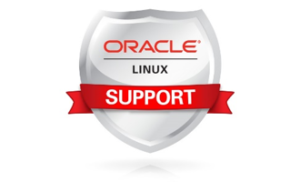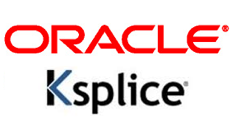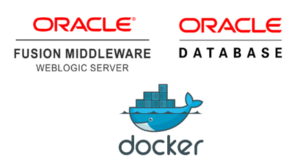De Database Experts!
 Linux needsreally no more introduction. Mainly popularized as a web server for Internet sites, since the appearance of Red Hat Enterprise Linux 17 years ago, this Operating System has also found a place internally in many organizations. Oracle has also been offering its own Linux distribution since 2006. Although some skeptics initially saw this as an experiment, Oracle has always been serious about this. For more than ten years now, Oracle Linux has been an up-to-date and in several respects very advanced Linux variant that can be used by anyone who wants to. In contrast to the comparable Red Hat Enterprise Linux, Oracle Linux can even be used free of charge (although a support contract is always recommended for production environments).
Linux needsreally no more introduction. Mainly popularized as a web server for Internet sites, since the appearance of Red Hat Enterprise Linux 17 years ago, this Operating System has also found a place internally in many organizations. Oracle has also been offering its own Linux distribution since 2006. Although some skeptics initially saw this as an experiment, Oracle has always been serious about this. For more than ten years now, Oracle Linux has been an up-to-date and in several respects very advanced Linux variant that can be used by anyone who wants to. In contrast to the comparable Red Hat Enterprise Linux, Oracle Linux can even be used free of charge (although a support contract is always recommended for production environments).

Oracle Linux is an operating system with long-term support, just as most organizations expect. Support and new security patches are available for at least 10 years after the release of a version, and this can be even longer when extended support is purchased. During that time, the development certainly does not stand still. Oracle is proactive in the so-called “backporting” of new Linux functionality to its existing releases, so that, for example, new hardware can be introduced without any problems.
As an Oracle database specialist, it goes without saying that we recommend Oracle Linux as a platform for running Oracle Database and Weblogic. There are good reasons for this. Oracle Linux includes some tools that simplify installation and use of Oracle products and the fact that all software comes from one supplier makes support easier. In addition, it is also the primary Linux platform on which Oracle products are developed and tested. This of course does not mean that Oracle Database is less stable or well tested on other operating systems, but it goes without saying that optimal performance on Oracle’s “own” platform will be at the top of the priority list.

Oracle’s own “engineered systems” such as Database Appliance and Exadata almost naturally also run on Oracle Linux. Designed for heavy business-critical workloads, these scalable servers need to be extremely reliable and fast. It is good to know that the practical experiences on such hardware serve as a reference for possible further optimizations of the operating system so that generic systems also benefit from this.
Oracle Linux is (of course) not specifically intended for use with other Oracle products. It can and can also be used for other applications because it contains all the components and packages that are common for a commercial Linux distribution. Server software initially built for Red Hat Linux will normally run on Oracle Linux without modification. Think of monitoring or backup software, but also self-developed scripts and other software. Compatibility is one of the strong points of Oracle’s Linux and makes it relatively easy to use in environments where other Linux variants may already be present. The unique features of Oracle Linux (fortunately) do not make it an odd one out. Any Linux administrator with experience on Red Hat or SuSE systems will be able to easily use Oracle Linux and not have to learn any new tools.
Distinctive Linux kernel
Oracle Linux has a custom Linux kernel that sets it apart from other distributions like those of Red Hat, SuSE, or Ubuntu. The Linux kernel is the system component most critical to performance, reliability, and scalability.
I/O Optimization
Oracle’s custom kernel has special adjustments for I/O optimization and tracing. Database workloads are optimally served as a result. When using storage with support for Data Integrity Extensions, Oracle Linux can also protect against data corruption that could occur in the chain from database software to physical disk.
DTrace
The tracing functionality (Dtrace) is of interest to system developers and troubleshooting system performance at the deepest level. This allows Oracle Linux to provide a lot of information about what exactly is going on in the system. Perhaps not of daily use to the average system administrator, but with complicated (performance) problems, you can dig very deep if necessary with the help of Oracle support.
 Ksplice
Ksplice
Ksplice If Premier Support is purchased, the UEK can use the “Ksplice” feature. This is a unique feature that allows kernel security updates to be applied and activated without requiring a system reboot. The running kernel can be patched “live”; essential security patches without downtime. This is extremely attractive for customers who want to deal with a possible security risk quickly but cannot plan downtime in the short term.
(Docker) containers
 A relatively new but rapidly gaining popularity method of virtualization are Linux containers. With containers, it is possible to virtualize environments very efficiently without the overhead of a simulated machine with its own virtual memory, processors, controllers and disks that is required with traditional VMs. Oracle Linux 6 and 7 (with the UEK kernel) support running containers. When using Oracle Linux 7, running Oracle Database in a container is also supported.
A relatively new but rapidly gaining popularity method of virtualization are Linux containers. With containers, it is possible to virtualize environments very efficiently without the overhead of a simulated machine with its own virtual memory, processors, controllers and disks that is required with traditional VMs. Oracle Linux 6 and 7 (with the UEK kernel) support running containers. When using Oracle Linux 7, running Oracle Database in a container is also supported.
We believe that Oracle Linux is an ideal platform for production tasks, especially Oracle Database and Weblogic. In our experience, Oracle Linux is a well-manageable, reliable and high-performing platform and therefore an ideal basis for anyone who places high demands on the quality of his or her database services.
DBA.nl has certified personnel with extensive knowledge and experience of Oracle Linux. This allows us to offer a complete management package for Oracle Database plus the underlying Linux Operating System so that you only have one point of contact for management.
If you have become interested and would like to know more, please do not hesitate to contact us for more information or, for example, a proof-of-concept. We are happy to help you.
DBA.nl,
the database
administrator
DBA.nl is the all-round database expert specialized in setting up, maintaining and monitoring database environments. In addition, we provide advice and remove performance problems.
DBA.nl now works in customer teams!
Since last June, we have switched to a working method based on customer teams within DBA.nl....
Details +
DBA.nl switches to a new service managemen...
DBA.nl has launched a new service management system. The choice fell on Topdesk....
Details +
RID de Liemers awards DBA.nl the tender &#...
DBA.nl, the database experts, may continue to manage the database environment of RID de Liemers....
Details +








